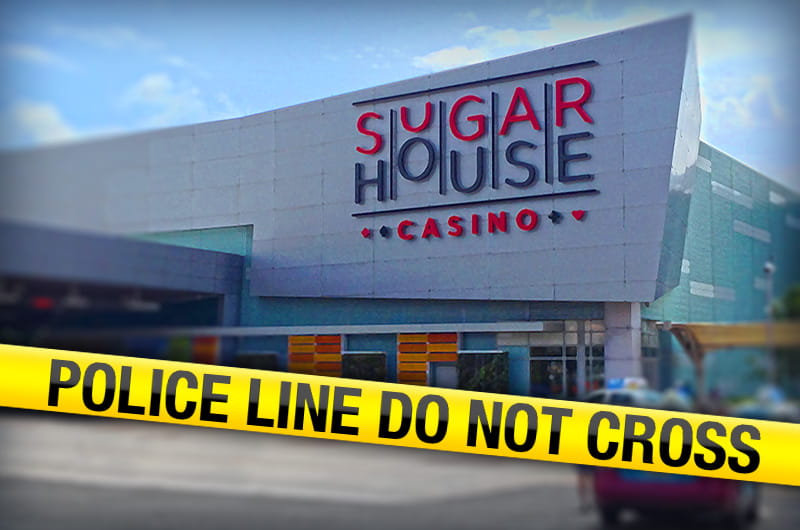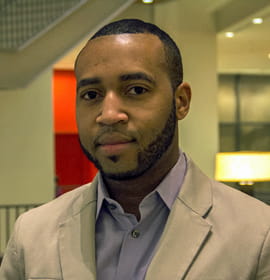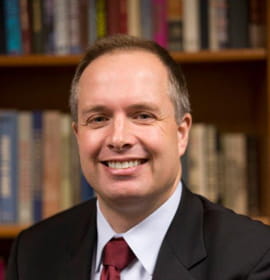Philadelphia’s SugarHouse Casino Does Not Contribute to Neighborhood Crime, According to New Study

- Drexel Selects New, World-Class Life Sciences Building at 3201 Cuthbert Street for Medical Research Operations
- Breakthrough on Gene Therapy for Hereditary Spastic Paraplegia
- Drexel Environmental Collaboratory Releases Cross-Sector Findings on Severe Weather Recovery Challenges
- Drexel Launches the Manuel Stamatakis Center for Alternative Investments at the LeBow College of Business

Philadelphia’s SugarHouse Casino opened its doors in September 2010 after years of protests from community members who feared that the casino would lead to an increase in neighborhood crime. However, a new study by researchers at Drexel University and Temple University reveals that these concerns were unfounded.
The study, which used geolocated crime data to examine changes in crime volume in the immediate neighborhood of the casino since its opening, found that crime rates in the Fishtown neighborhood of Philadelphia were largely unaffected by the introduction of the gaming establishment. The researchers found that any potential significant crime increases either did not occur or were effectively controlled by a reassignment of existing local police officers.
Entitled “A Partial Test of the Impact of a Casino on Neighborhood Crime,” the study was published online on by Palgrave MacMillan’s Security Journal, a peer-reviewed journal for security researchers and professionals. It is expected to run in an upcoming print issue of the journal. The full article is available here.
The study was conducted by Lallen T. Johnson, PhD, an assistant professor of criminal justice in Drexel University’s College of Arts and Sciences, and Jerry H. Ratcliffe, PhD, a professor and chair of the Department of Criminal Justice at Temple University.
“The arrival of the gaming industry to the city of Philadelphia was met with much controversy and protest,” said Johnson. “In particular, anti-casino community activists and organizations believed that gambling would lead to increased crime and disorder. Early discussions about the arrival of SugarHouse revolved around whether the added tax revenue would outweigh the social cost of the expected increased crime. Although reasonable concerns, our findings suggest that these negative expectations did not play out in this case.”
In order to examine neighborhood-level crime-causing effects of a casino in a localized urban environment, Johnson and Ratcliffe analyzed 96 months of crime incident data to determine the extent to which crime counts changed within the Fishtown neighborhood after the casino’s opening. The researchers used the data to evaluate the effect of the new casino development on four crime types – violent street felonies, vehicle crime, residential burglary and drug crime – at the neighborhood level.
“Prior studies of casinos and crime have considered the influence of gaming establishments on entire cities or counties,” Johnson said. “This study, on the other hand, is the first to examine how casinos influence crime at the neighborhood level. This is particularly important considering that SugarHouse is situated near residential developments. The study also looked at whether crime was displaced to surrounding areas after opening.”
Key findings include:
- Violent street felonies increased at a rate slightly greater than violence in the control area; however, this increase was not statistically significant when examined in the context of the longer trend since 2004.
- Vehicle crime decreased in the casino area; however, there was substantial displacement and the reductions in vehicle crime were not statistically significant over the long term.
- Both residential burglary and drug crime decreased in the casino area (again though, not significantly from a statistical perspective) and there were reductions in these crimes in the buffer areas.
In summary, there is no evidence that the opening and operation of the casino had a significantly detrimental effect on the immediate neighborhood in terms of violent street felonies, vehicle crime, residential burglary or drug crimes. There was evidence, however, that some vehicle crime – including vehicle thefts and thefts from vehicles – was displaced to the surrounding community.
According to the researchers, there may be a number of explanations for these findings. First, as a 24-hour facility, the casino may inadvertently attract more individuals to the area. Potential offenders may, as a result, opt to commit crime elsewhere believing that the odds of detection have increased. Second, in anticipation of the casino opening, the 26th police district commander created a special patrol district that works closely with SugarHouse management. The strategic allocation of police resources may be partially responsible for suppressing crime in the area.
“It is important to revitalize urban areas without inadvertently creating criminal opportunities,” Ratcliffe said. “With no increases in violence, burglary or drug crime, we hope that the community and the police are reassured by these findings.”
In spite of the relatively positive results, it would be premature to generalize the findings of this study to other neighborhoods with casinos, according to the researchers. Instead, this study shows that is important to study potential linkages between casinos and crime at multiple levels of analysis, such as neighborhood, city, county and state.
“While our findings here do not settle the debate on casino and crime linkages, they do contribute to a growing body of knowledge and suggest a need for more neighborhood-level research,” said Johnson. “At the very least, the findings demonstrate that common community concerns regarding local crime conditions with the addition of a gaming establishment to the neighborhood were not borne out by the SugarHouse example.”
This study had no external funding sources.
About the Researchers:

Lallen T. Johnson, PhD, is an interdisciplinary scholar with research interests at the intersection of urban studies, crime and place. His most recent research examines how structural shifts affect municipality-level violent crime hotspots within the Philadelphia Metropolitan Area. Johnson is a 2010 Graduate Research Fellow of the National Institute of Justice. His funded research has examined the travel patterns of illicit drug arrestees in the Philadelphia region to understand the relationship between drug crime and violence. He also has assessed the effectiveness of state legislation on the diversion and abuse of prescription drugs in the state of Florida. Johnson previously taught at the University of Central Florida.

Jerry H. Ratcliffe, PhD, is chair of the department of criminal justice and directs the Center for Security and Crime Science at Temple University. He previously served as a police officer with the Metropolitan Police in London, where he served for a number of years on patrol duties, in an intelligence unit, and as a member of the Diplomatic Protection Group. Ratcliffe was also a senior research analyst with the Australian Institute of Criminology, where he conducted one of the first evaluations of an intelligence-led policing operation. He has published more than 60 research articles and four books. His most recent book, “Intelligence-Led Policing,” is the first book to address this emerging area of police management practice, and is on the promotion exam reading lists for the Philadelphia Police Department.
Drexel News is produced by
University Marketing and Communications.